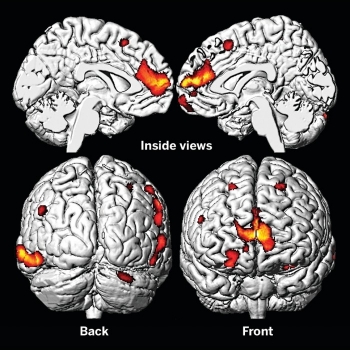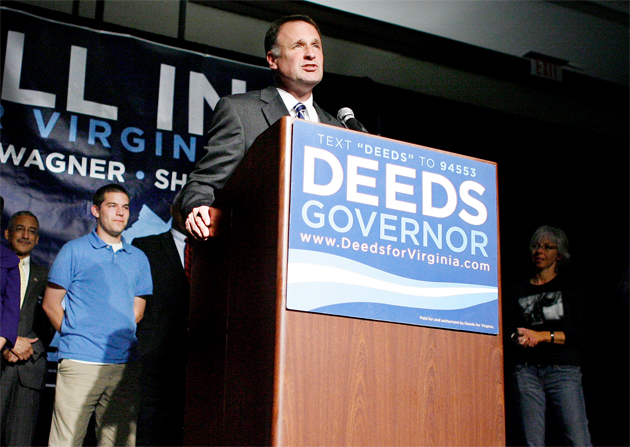
"We have better information than the police," DeVone Boggan, the director of the Office of Neighborhood Safety.Photographs by Brian L. Frank
It was a crazy idea, but Richmond, California, wouldn’t have signed off on DeVone Boggan’s plan if it had been suffering from an abundance of sanity. For years, the Bay Area city had been battling one of the nation’s worst homicide rates and spending millions of dollars on anti-crime programs to no avail. A state senator compared the city to Iraq, and the City Council debated declaring a state of emergency. In September 2006, a man was shot in the face at a funeral for a teenager who had been gunned down two weeks earlier, spurring local clergy to urge city hall to try something new—now. “If you always do what you’ve always done, you’ll always get what you’ve always gotten,” says Andre Shumake Sr., a 56-year-old Baptist minister whose son was shot six times while riding his bicycle. “It was time to do something different.”
Richmond hired consultants to come up with ideas, and in turn, the consultants approached Boggan. It was obvious that heavy-handed tactics like police sweeps weren’t the solution. More than anything, Boggan, who’d been working to keep teen offenders out of prison, was struck by the pettiness of it all. The things that could get someone shot in Richmond were as trivial as stepping out to buy a bag of chips at the wrong time or in the wrong place. Boggan wondered: What if we identified the most likely perpetrators and paid them to stay out of trouble?
Boggan submitted his proposal. He didn’t expect the city to come back and ask him to make it happen. “They asked me for a three-year commitment and told me to put on my seatbelt,” he recalls.
In late 2007, Boggan launched the Office of Neighborhood Safety, an experimental public-private partnership that’s introduced the “Richmond model” for rolling back street violence. It has done it with a mix of data mining and mentoring, and by crossing lines that other anti-crime initiatives have only tiptoed around. Four times a year, the program’s street team sifts through police records and its own intelligence to determine, with actuarial detachment, the 50 people in Richmond most likely to shoot someone and to be shot themselves. ONS tracks them and approaches the most lethal (and vulnerable) on the list, offering them a spot in a program that includes a stipend to turn their lives around. While ONS is city-funded and has the blessing of the chief of police, it resolutely does not share information with the cops. “It’s the only agency where you’re required to have a criminal background to be an employee,” Boggan jokes.
So far, the results have been promising: As this story went to press, 65 of the 68 “fellows” enrolled in the program in the previous 47 months were still alive. One had survived a shooting and three had died. In 2007, when Boggan’s program began, Richmond was America’s ninth most dangerous city, with 47 killings among its 106,000 residents. In 2013, it saw its lowest number of homicides in 33 years, and its homicide rate fell to 15 per 100,000. Rates are dropping nationwide, but not so steeply. (In 2013, nearby Oakland’s homicide rate was 23 per 100,000; Detroit’s was 47 per 100,000.)
When Boggan picks me up at the Richmond BART station on a rainy February afternoon, the city is in the midst of a four-month stretch without any gun murders—its longest since he started ONS. As he rattles off the numbers, he looks for a piece of wood to knock on before settling, with a touch of self-deprecation, on his head.
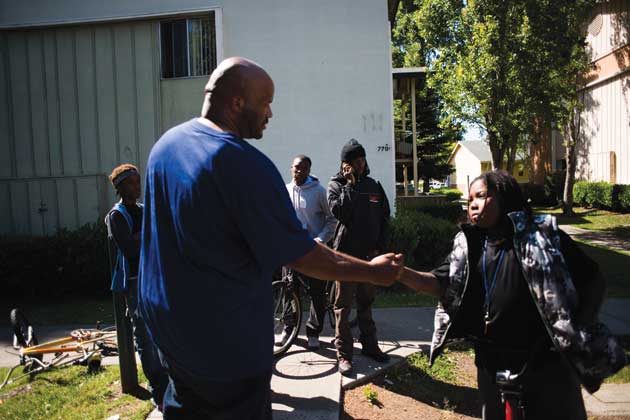
Boggan, 47, is bald with graying stubble. He wears a black-and-white houndstooth hat and a pin with a peace sign and the ONS logo on the left breast of his gray fleece jacket. He carries himself with the assurance of a tough-love motivational speaker, which seems to run in the family. His brother is a football coach; his father was a city manager. Growing up as “a kid at the fringes” in Michigan, he was busted for selling drugs. He credits two mentors with turning his life around. “I desperately needed strong, caring, and consistent adults who were willing to take a risk in believing in me,” he says. He went on to attend the University of California-Berkeley and directed a consulting firm in Oakland that specialized in developing youth mentoring programs. But he was ready to work on something more enduring. “As a consultant, you build your sand castle and then you leave.” That’s when Richmond came calling.
Much of what ONS does has been tried before, with some success. In the 1990s, Boston’s Operation Ceasefire brought together teams of streetworkers and cops to help reduce the youth homicide rate by 73 percent in one year. A Chicago program employs “interrupters,” who attempt to prevent retaliatory violence by confronting and counseling would-be shooters. Chicago’s public school system enlisted MIT statisticians and Freakonomics coauthor Steven Levitt to create algorithms that determined which students were most at risk of getting shot. The kids were then matched with mentors.
Boggan saw lessons in these approaches, but also some limits. The “Boston Miracle” leaned heavily on the stick and not the carrot, using the threat of incarceration to scare gang members into cooperating. The interrupters, the subject of a documentary by the director of Hoop Dreams, are often left playing whack-a-mole with one hot spot after another. The Chicago school program, which has struggled with funding, ends when students graduate. Plus, the social programs and job training that had been promised in Chicago didn’t reach their intended targets.
Boggan believed that his program would be more effective if it did more with less. Instead of seeking to turn around entire neighborhoods, it would identify a tiny group of individuals and focus on their behavior. It’s a little like stop-and-frisk, except the profiled subjects are singled out for positive attention and opportunities.
Here’s how it works: A team of seven “neighborhood change agents” patrol the streets like beat cops, keeping tabs on the 50 high-risk members of what Boggan calls the “focus group.” The coordinators, most of them former convicts, check in with their sources at corner stores, barbershops, and churches and report back daily on what they’ve heard. “I want us to hunt ’em like they hunt, and I want us to hunt for information,” Boggan says. “We have better information than the police.” Once a certain level of trust has been established between the coordinators and their targets, a meeting is arranged, and the pitch is made.
In exchange for shunning dangerous behavior, ONS fellows receive anywhere from $300 to $1,000 per month, depending on their progress following a “life map” of personal and professional goals. If they team up with someone from a rival community to renounce violence altogether, they can get even more money—though that’s yet to happen. Fellows can receive stipends for 9 of their 18 months in the program. The city gave ONS $1.2 million for its operating budget last year, but the money for the stipends came from a handful of private donors, including the health care giant Kaiser Permanente. (A Kaiser spokeswoman says the program is good for “diffusing community tensions and reducing violence,” thereby limiting stress-related health risks like heart disease, strokes, and diabetes.)
ONS staffers help fellows take concrete steps toward stability, from providing assistance in getting a driver’s license or a GED to helping raise $5,000 for a merchant-marine training class. Though the program officially cuts off when fellows turn 25, Boggan says ONS tries to stay in touch with them as long as possible.
Despite the morbid implications of finding themselves on ONS’s list, the targets don’t always respond right away. “It’s just words, sometimes,” says Eric Welch, a 25-year-old ONS fellow who was shot twice—the first time when he was 15—before joining the program. “To me it ain’t nothing that I ain’t never heard before.” But ONS kept after him, and eventually Welch realized the danger was real. “It was just like, ‘Okay, he’s saying this for a reason.'”
“The analogy here is infectious disease,” says Barry Krisberg, a UC-Berkeley criminologist who has advised Boggan. For years, crime fighters had combated epidemics of violence by quarantining criminals in prison. Boggan took what he’d seen in other cities and adopted a new course of treatment: By inoculating the carriers of violence, perhaps you can protect an entire community.
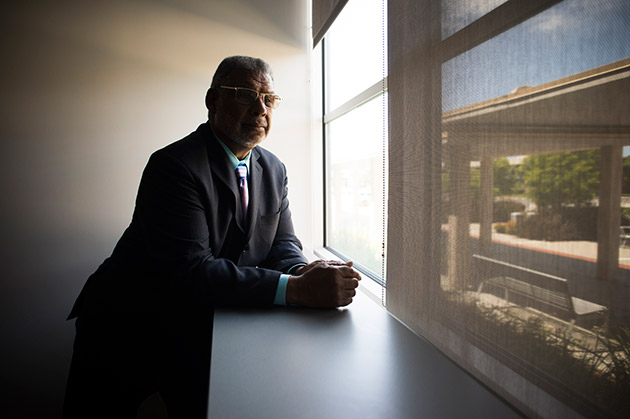
The program is not without its critics. Chief among them is Courtland “Corky” Boozé, a city councilman who once helped integrate the sport of drag racing. (“Powered by the Black Man” was painted on the rear of his car.) Boozé has said he would like to see ONS and Boggan brought “to their knees,” and he claims that the program wants him dead for demanding proof of its impact. In his view, unverified reports of ONS’s achievements are naive and a little racist: “White folks like to pat black folks on the head, give ’em a few bucks, and think that their problems will go away. It never happens.”
Boggan, who is African American, dismisses that criticism as “shallow thinking” and “race baiting” and says he’d rather ignore Boozé than focus on “counterproductive energy.” But it’s hard to dismiss Boozé’s argument that better policing and neighborhood cooperation had a lot to do with bringing down the city’s murder numbers. When Police Chief Chris Magnus came to Richmond from Fargo, North Dakota, just as ONS was in the planning stages, he reorganized his officers’ beats and scrapped “Nitro” street sweeps, which padded arrest stats but did nothing to curb gun violence.
ONS may have evolved alongside the new chief’s reforms, but it doesn’t work with the cops—in fact, it outright refuses to cooperate with law enforcement. Partly that’s because its mentors fear being perceived as informants, and partly because most of them, having done time themselves, are in no hurry to expedite anyone else’s trip to prison. Boggan proudly notes that ONS staffers have never testified for or against anyone in court.
The ONS office occupies what used to be a jail in a redbrick building that also houses the City Council. Its third-floor office is best known as the site of what the media nicknamed the “City Hall Brawl.” Among ONS staffers, it’s known as “D-Day.” On October 14, 2011, two rival groups of young men showed up to check in with their mentors. They traded insults in the parking lot before heading inside, only to find the ONS office empty, at which point punches started flying. A local paper covered the fracas for two weeks, and the story even wound up on the Drudge Report. Shortly thereafter, a police report about a female ONS staffer allegedly caught in an R-rated moment with a gang member conveniently found its way to the press. To outsiders, Boggan says, “It was like, ‘What kind of crap are they doing in Richmond?'”
Yet from another perspective, the incident marked a turning point. The everyday violence in Richmond “was like a battering ram—boom boom boom!” says Boggan. And then there were the politics. “The first several years I basically said every day, ‘I’m done,'” he recalls. But on that infamous day, eight of the city’s most dangerous citizens had convened in close quarters and the only damage was a broken nose. When the City Council met to discuss ONS’s fate, its supporters filled the chambers with signs saying “I Support DeVone Boggan.”
ONS mentors say the incident helped seal the deal with skeptical targets, but Boggan admits that the tension over the program remains. “Law enforcement is challenged by this idea that the people you’re trying to change are the ones committing the crimes,” he says. Chief Magnus says he sees ONS as a partner in spite of its policy of noncooperation, though he chooses his words carefully. “I accept that we’re working to accomplish a lot of the same things, but we’re doing it in different ways. I think there’s a respect for that.”
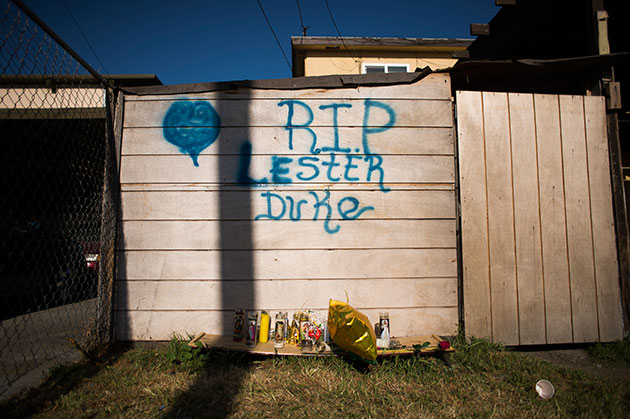
When I visit the ONS office, six outreach coordinators are sitting around a coffee table where copies of Sports Illustrated are mixed with literature on restraining orders and a brochure for a class on heavy construction equipment. Everyone has a stapled Excel spreadsheet, and for the next hour, Kevin Muccular, a former offensive lineman at Florida A&M University and the only ONS mentor without a prior felony conviction, leads them through the list of current and potential fellows.
A guy on the list was seen walking through an unfriendly neighborhood in a transparent attempt to draw gunfire. Someone else has started pimping. “They do know they get, like, real time for that?” someone asks. More than a few members of the focus group are in jail—one for a dirty urine test, one for being in the same house as a loaded gun that belonged to his mother. Another guy on the list was the subject of a warrant for a shooting. “I thought someone else did it,” one of the ONS guys says. Well, yes, but it’s complicated.
Outreach coordinator Kevin Yarbrough recounts running into one of his targets outside a liquor store.
“What was it he was drinking again?” Muccular asks.
“Pink moscato.”
“Pink moscato!”
“He’s a hardcore dude with a bottle of pink moscato,” Yarbrough says. “The only thing missing was a wine glass.”
“With a pinkie out,” adds Sam Vaughn, who led a self-help program for San Quentin inmates while serving a 10-year sentence for attempted murder. Like most of his colleagues, he probably would have found himself on the ONS list had it existed back in his younger, volatile years.
Yarbrough says he has a story for me. “Joe shot me!” he exclaims. Well, not literally, but on July 3, 1989—you remember these kinds of dates—Joe McCoy’s crew shot him in retaliation for a gunfight a couple of days earlier. Yarbrough pulls up his sleeve to reveal a hamster-size scar on his inner forearm.
“We just had a hothead out there who didn’t know to—”
“Grieve without violence,” says McCoy, a lanky 44-year-old with a black knit cap pulled down low.
“Grieve without violence,” Yarbrough agrees.
For now, no one can definitively say whether Richmond’s program is a model, a fluke, or something in between. “We’re not doing the evaluations we should be doing; we’re not bringing in objective people to look at it,” UC-Berkeley’s Krisberg admits. But the National Council on Crime and Delinquency, which receives funding from the Department of Justice and the Walton Family Foundation, is studying the program’s implementation.* “Nobody else is doing anything else like this,” says Angela Wolf, the psychologist leading the study.
There’s a smidgen of empirical precedent for Boggan’s experiment. In 1972, the Labor Department provided financial assistance to released prisoners in Baltimore. The results suggested that paying former prisoners to stay out of trouble was the most effective way to reduce recidivism. However, the program was never successfully replicated.
Some Richmond residents, for their part, have seen enough well-intentioned programs come and go to be wary. Kenneth Davis, a community activist, bemoans “poverty pimps” who collect fat city contracts for social services without any clear measure of results. “DeVone’s in a good position, he’s got a good job, he’s making decent money, and he’s in the mayor’s favor—but I was in the mayor’s favor too,” he says.
Even ONS’s success stories are a testament to its limits. Rohnell Robinson, a four-year ONS fellow, gushes about the places he’s visited with Boggan’s help—Cowboys Stadium, Dubai—but he confesses that being a part of ONS can be a sort of purgatory where the cops still think you’re a thug and your friends think you may be a narc. “It’s like you gotta protect yourself two times.” The worst part, he says, is “the hate you get coming from your peers, the people you grew up with and who are living on the other side of the fence.” Eric Welch, who was shot two more times after joining ONS, has since moved to Florida.
There’s a finger-in-the-dike sense among the ONS street team, too, a reflection of the enormity of the challenge. “We just five dudes in a little tiny office with a helluva director,” McCoy says. “We’re like the 300.” But there’s always the open question of whether ONS is a house of cards that could collapse with a single bullet. “The lesson learned in Boston is that you can’t afford to get complacent and think it’s a ‘Mission Accomplished,’ George Bush-esque scenario here,” says Magnus.
Three weeks after I met with Boggan, the city’s 137-day murder-free streak ended. A 38-year-old man was killed in a drive-by shooting, and over the next few weeks, Richmond seemed to be sliding back to the bad old days. A 43-year-old woman and a 24-year-old man were gunned down within 24 hours of each other. A 30-year-old woman shot the 16-year-old father of her child in a dispute over his new girlfriend. A robber was shot and killed during a break-in. None of them was on Boggan’s list.
*The evaluation of ONS is funded primarily by the California Wellness Foundation.

